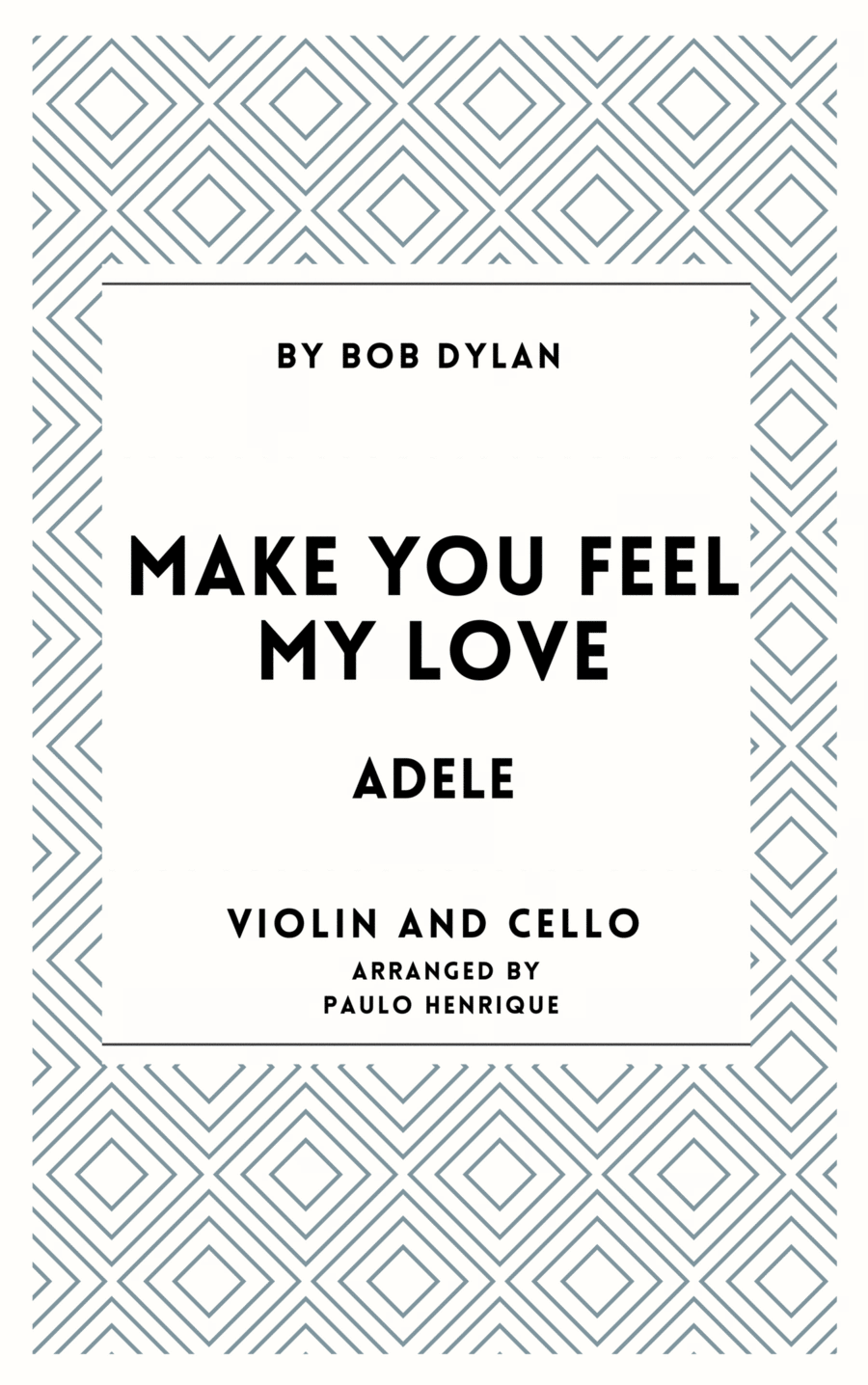Instrumental Duet,Piano Cello,Instrumental Duet,Piano,Violin - Level 2 - Digital Download SKU: A0.1384080 By Adele. By Bob Dylan. Arranged by Paulo Henrique. Blues,Folk,Pop,Rock,Wedding. 10 pages. Paulo Henrique #968442. Published by Paulo Henrique (A0.1384080). Make You Feel My Love, Bob Dylan, Adele, Arrangement for Violin and Cello, Violin, Cello, Piano/Guitar Chords, Strings, Pop, Rock, Folk, Folk Rock, Blues, Country, Blues, Wedding, Lounge Music, Soul, R&B.
